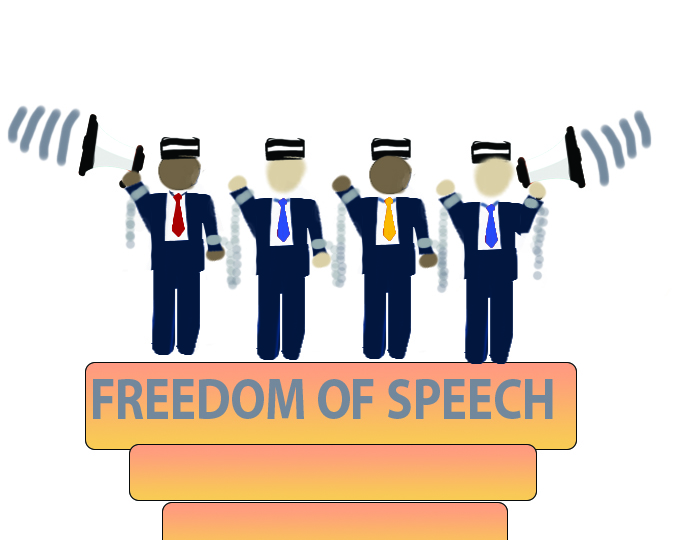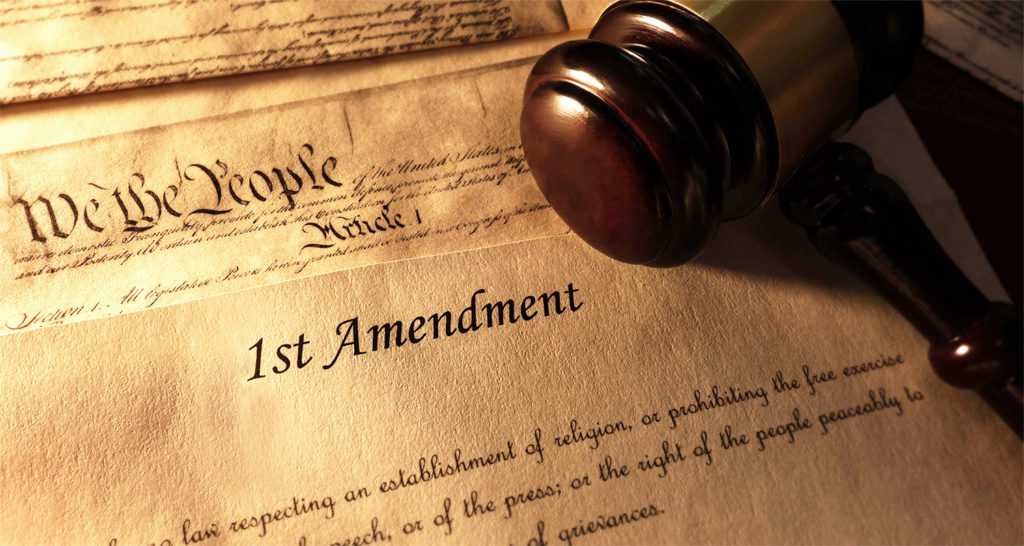By Ilias Siakaras,
In contrast to the First Amendment tradition, which came to the surface in its modern form only in the early decades of the 20th century, legislatures embodied their actions in order to protect the interests (that we recognize today as the First Amendment) as a form of protection, which began in the mid-18th century and continued to do so throughout the 19th and 20th centuries in all sorts of ways. This fact complicates the draw-attention narratives of the history of freedom of speech in the United States. To be more specific, First Amendment guarantees freedom of expression and the free assembly of people while it commands against any restriction. It is definitely true that 18th and 19th-century courts used to interpret constitutional free expression guarantees, so as to grant speakers and listeners few rights against the government.
As an outcome of its innate complexity, even with the time elapsing of hundreds the meanings of speech and press freedoms at the Founding remain remarkably hazy. As Rodney A. Smolla writes: “[…] But no clear, consistent vision of what the framers meant by freedom of speech will ever emerge”. Still, more scholars conclude that “freedom of speech, unlike freedom of the press, had a little history as an independent concept when the first amendment was framed”.
On the other hand, legislators proved to be much less insensitive to the need to protect expressive freedom and the democratic freedoms that it enabled against both government and private power than did the courts. Indeed, what we find during this period is significant and enduring legislative concern about the threat that the concentration of economic power produced by the increasing industrialization of the U.S. economy posed to the expressive freedom of the less powerful, as well as to the well-being of the institutional press.
Since at least the 1940s, the Supreme Court has developed a distinctly counter-majoritarian and court-centric vision of freedom of expression in its First Amendment rulings. It has been argued that what the formal approval of the First Amendment was intended to do was remove the question of what freedom of speech means from “the ups and downs of political controversy”, as it was stated, and convert it to “a legal principle to be applied by the courts”.

Placing our approach in a historical evolution context, by the late 18th century, expressive freedom also connoted a variety of more determinate legal protections. The rule against press licensing, for example, was sometimes referred to as the liberty of the press; by banning previous controls on the press, this law left jurors in charge of enforcing state prohibitions on expression through criminal proceedings. Meanwhile, the freedom of speaking, writing, and publishing ensured that well-mannered statements of one’s views were immune from regulation. What could be deduced in this multi-factorial way is that expressive freedom entailed legal schemes.
Apart from the expressed ideas, there are some categories of speech that are given lesser or no protection by the First Amendment — hence not restricted — including using curse words or being involved in pornography, fraud, speech integral to illegal conduct, speech that incites imminent lawless action, speech that violates intellectual property law, true threats, and commercial that books and films that are published and sold for profit do not make them commercial speech; that is, it does not prevent them from being a form of expression whose liberty is safeguarded to the maximum extent by the First Amendment. Significant to each attempt by the government to regulate speech due to its commercial character is the question of whether the speech is, in fact, commercial in the constitutional sense.
For instance, in 2017, a juvenile court in Massachusetts ruled that repeatedly encouraging someone to commit suicide was not protected by the First Amendment and found a 20-year-old woman, who was 17 at the time, guilty of the offense of manslaughter on this basis.
To form a First Amendment doctrine that could adequately be protecting freedom of speech in our complex democratic society, it is necessary to first understand how that freedom of speech has in fact historically been protected.
References
- Natural Rights and the First Amendment, yalelawjournal.org, Available here
- The First Amendment – Freedom of Speech, Religion, and the Press, constitution.findlaw.com, Available here
- The Establishment Clause, constitutioncenter.org, Available here
- Thomas I. Emerson, Toward a General Theory of the First Amendment, Yale Law Journal, 1962-1963
- Alexander Meiklejohn, The First Amendment Is an Absolute, in The Supreme Court Review, University of Chicago, vol. 19, 1961




